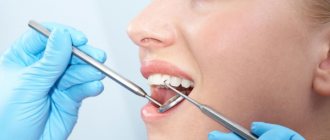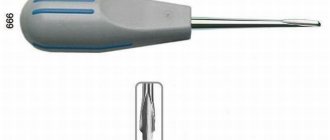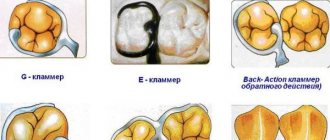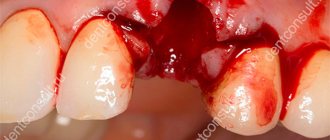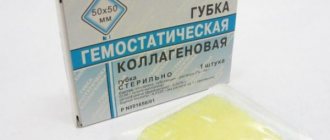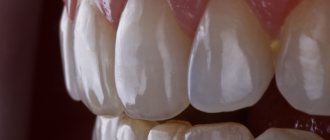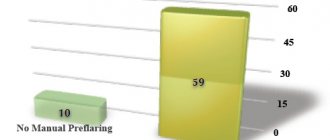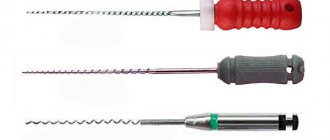Author: Brodsky Sergey Evgenievich Deputy Chief Physician, Candidate of Medical Sciences in the specialties: dentistry and medical microbiology Techniques for tooth extraction depend on the number of its roots, the clinical situation and surgical instruments. You can learn about how the process of tooth extraction occurs in this article.
- What instruments are used to remove teeth?
- How does the tooth extraction process work?
- How is a complex tooth extraction performed?
- When is complex tooth extraction required?
What instruments are used to remove teeth?
Depending on the clinical situation, the instruments used to remove teeth may be needed in different combinations, or the doctor may be content with just one.
1) Tooth extraction forceps
- There are forceps for removing upper and lower, front and back teeth. In addition, there are so-called universal (button) dental forceps for extracting any tooth. For third molars, which are displaced towards the tongue or cheek during eruption, there are special forceps for removing wisdom teeth, which allow you to very tightly cover the crown part of the eighth teeth. There are also special root forceps for removing only one root from the bone tissue.
Deputy Chief physician Sergey Evgenievich Brodsky
Sign up for a free consultation
+7
2) Elevators for dental extraction
- This type of tool is made in the form of a sharpened screwdriver with a groove, with which you can pick up and dislocate a tooth or a separate tooth root. There are a great many options and types of dental elevators. For wisdom teeth, there is a special elevator, the so-called “Lecluse Key,” which facilitates the dislocation of eighth teeth that are tightly seated in the jaw.
A planned operation to remove lower teeth is performed:
- When dental tissues are destroyed below the gum level. Such a dental unit cannot be used as a support for orthopedic treatment.
- Impenetrable root canals. In this case, conservative treatment becomes impossible.
- Tooth mobility in all planes.
- If, in the case of a jaw bone fracture, a dental unit is found in the fracture line. In this case, without removing the tooth, it is not possible to correctly compare the fragments.
- Dystopian teeth.
- "Eights" covered with a hood of mucous membrane. With frequent exacerbation of pericoronoritis.
Contraindications
Like any dental procedure, extraction surgery sometimes requires a delay. When is this operation contraindicated?
Local contraindications:
- Inflammatory diseases of the soft tissues of the oral cavity (stomatitis, gingivitis, etc.).
- If the dental unit is in the projection of a malignant tumor.
- Damage to the mucous membrane caused by an allergic response (medicinal stomatitis, cheilitis, etc.).
- Manifestation of specific infections in the oral cavity: tuberculosis, syphilis, actinomycosis.
- Radiation therapy or radiation sickness.
- If there is no permanent tooth germ in the jawbone, then removing the temporary unit should be delayed as long as possible.
General contraindications:
- Diseases of the heart and blood vessels.
- Chronic diseases of internal organs in the acute stage.
- Acute degree of mental disorder.
- Infectious disease: measles, chickenpox, scarlet fever, diphtheria, dysentery, influenza.
- Pathology of the nervous system.
- Blood diseases.
- The beginning of pregnancy and the last trimester of pregnancy.
How does the tooth extraction process work?
The process of tooth extraction proceeds according to the following scheme:
- Pain relief with local anesthesia;
- Selection of tools for dental extraction (elevator and/or forceps);
- Applying forceps or an elevator to the tooth being removed;
- Rocking or dislocation of the “sentenced to be removed”;
- Extracting a tooth from the jaw socket;
- Toilet (care and protection) of the surgical wound left after tooth extraction.
In this scheme, there may be additional stages when, before tooth extraction, a lot of the root tooth is first sawed and pulled out of the bone socket in parts. This option is required for crooked and twisted roots.
When is surgery indicated?
Indications can be called urgent and planned. The difference between them is that with an urgent operation, the clinical picture in the oral cavity and the general condition of the patient does not require delay. Delay may result in complications not only in the maxillofacial area, but the patient’s general condition may worsen.
Urgent indications include:
- A situation where dental tissues are severely destroyed and do not provide any functional benefit, but only aggravate purulent inflammatory processes in the oral cavity and soft tissues of the face. Usually these processes come from this jaw structure, due to the constant accumulation of pathogenic microflora there. Untimely treatment can cause the following purulent-inflammatory processes: periodontitis, periostitis, sinusitis, phlegmon or abscess.
- Diagnosed osteomyelitis in the projection of a destroyed, diseased dental unit.
- Longitudinal dental fracture.
- Transverse fracture of the dental crown with opening of the pulp chamber, but due to curvature or resorption of the roots, the tooth cannot be treated endodontically.
How is a complex tooth extraction performed?
Options for non-standard tooth extraction are required in different clinical situations. The most common option is the difficult removal of the eighth tooth, especially when it has not fully erupted or is generally lying and completely immured in the jaw.
The most commonly used method for complex tooth extraction is:
- Conducting anesthesia;
- Creating access to the tooth to be removed, dissecting the mucous membrane and periosteum, forming an evacuation window in the bone tissue of the jaw, in which the unerupted (impacted) tooth is hidden;
- Extracting a tooth from the jaw using an elevator;
- Toilet of the surgical wound, including treatment with furatsilin and rinsing with hydrogen peroxide, filling the voids from under the extracted complex tooth with bone powder, applying a membrane and suturing the gums;
- Prescription of anti-inflammatory therapy.
Tooth root removal
Tooth extraction can be of varying complexity. Sometimes this is a fairly simple process, but it can get complicated:
- after the start of the procedure for removing a heavily damaged tooth or a tooth with curved roots, a fracture occurs in the middle part of the root or its apex;
- It is not easy to remove the roots of a completely destroyed tooth, which are located deep in the alveolus.
Therefore, the removal method is selected individually, depending on the situation.
Removal with forceps
A part of the tooth protrudes above the edge of the hole from the outside and inside, which the dentist must grab with forceps. To do this, he carefully separates the gum from the root.
Sometimes the dentist has to peel off the mucous membrane and periosteum from the edge of the socket in order to properly grasp the tooth.
Even if, as a result of pathological changes, bone resorption has occurred, the cheeks of the forceps can be inserted deep enough to tightly grasp the root.
Upper jaw root removal
Depending on which tooth needs to be removed, the doctor uses special extraction forceps. For example, for large molars, bayonet-shaped forceps are used. Their cheeks may move deep under the gums. Incisors and canines are removed using an S-shaped instrument.
Basically, removal occurs using rocking movements. If the roots are located deep in the alveolus or are large, the dentist adds rotational movements.
If it is not possible to extract the root with forceps due to its deviation or the thick walls of the holes, then the doctor separates them with a bur.
If the root is deviated, the bottom of the tooth cavity is sawed where the buccal roots connect to the palatal roots. First, using a spherical bur, a hole is made in the interroot commissure, and then, using a fussur bur, the bottom of the tooth is sawed in the longitudinal direction. An elevator is inserted into the resulting cavity and the palatal root is dislocated. After this, it is removed with bayonet-shaped forceps.
Mandibular root removal
Typically, the roots of the lower jaw teeth are shorter and have thinner socket walls.
To remove the root of a lower jaw tooth, a dental surgeon mainly uses rib-curved forceps with thin and narrow cheeks.
To remove fangs, use forceps with wider cheeks. Sometimes difficulties arise when extracting the lower molars. Often it is not possible to insert the cheeks of the forceps deeply because they slip off. Since the alveolar process is quite thick at the edges of the socket, it is not possible to apply forceps to the cheeks. Therefore, when removing lower molars, an elevator is often used.
Tooth root removal using an elevator
If it is not possible to remove the roots of the teeth using forceps, an elevator is used. This situation may arise if they are deep in the hole. Using forceps can damage adjacent bone tissue and mucous membrane. Using an elevator is less traumatic.
Removal by direct elevator
It is used to remove the upper teeth and roots of teeth that are located outside the dentition, and sometimes when extracting the lower third molar.
The elevator is inserted between the wall of the hole and the root that needs to be removed. To do this, the convex part of the cheek is located towards the wall of the hole, and the concave part is facing the root. The dental surgeon presses on the handle and rotates it around the longitudinal axis in both directions. Periodontal fibers break and move to the opposite wall of the socket. After the cheek of the elevator enters approximately four millimeters, the tool rests on the edge of the hole and acts as a lever. The doctor’s force is transferred to the end of the elevator, and the root is squeezed out of the alveoli.
When removing the roots of molars that are welded together, they are first separated using a fissure bur and then removed one by one using bayonet-shaped forceps or an elevator.
Removal by corner elevator
Angled elevators are used to extract the roots of lower teeth, mainly molars. When removing them, hold the tool with your whole hand. In this case, the handle of the instrument should be on the cheek side.
The cheek of the corner elevator is inserted to the tooth to be removed with its concave part into the gap between the wall of the socket and the root or between the adjacent tooth and the root. In order for the cheek to move deeper, the thumb of the left hand presses on the intermediate part of the instrument at the point where it passes into the working part. At the same time, the elevator handle is moved forward and backward alternately by twenty degrees. After inserting approximately 0.6 centimeters into the periodontal fissure, rotational movements are made with the handle and the tooth is pulled out of the socket.
Treatment of the tooth socket
If the removal took place against the background of purulent inflammation, then treatment of the tooth socket is necessary. The hole must be washed with an antiseptic solution, and then an anti-inflammatory medicine is placed in it. It should be placed in the hole even if there is no inflammation. This is done for preventive purposes, so that after removal the wounds heal without inflammatory processes.
Stitching
To bring the edges of the wound closer together, they are sutured with special suture material.
After detachment with a trowel, the gums loosen a little, and a blood clot may fall out of the socket. To prevent this from happening, the wound is sutured. In addition, this will allow it to heal faster.
Thanks to the sutures, the size of the wound is reduced, and this reduces the possibility of inflammation developing in the hole.
Sutures are also used to stop bleeding. They help prevent bleeding that may occur some time after tooth extraction.
The stitches are removed after about five to ten days. If catgut was used as a suture material, then there is no need to remove the sutures, since catgut is absorbed.
After the extraction, the dental surgeon ends his appointment with care tips and, if necessary, prescription of medications.
The article used materials from the site: https://stoma.guru/lechenie/udalenie/osobennosti-udaleniya-kornya-zuba-kak-prohodit-operaciya.html#hcq=FmBUKCq
When is complex tooth extraction required?
Clinical situations in dentistry when tooth extraction is considered difficult are:
- Tooth with a cyst;
- Dystopic or impacted wisdom tooth;
- Fistula in the projection of the tooth;
- Removal of premolars in the treatment of malocclusion;
- Removal of baby teeth in children;
- Abnormally crooked roots directed in different directions.
To successfully remove complex teeth, in each individual case, the dental surgeon can use a combination of different tools and methods that are most suitable for successfully extracting teeth and roots from the jaw.
Just CALL US!
+7
We will answer any of your questions and will definitely help you!
Dentistry orthopedics instruments
Specifically, orthopedics in dentistry sometimes uses specific tools - in particular, knives for processing casts and models of jaws, elevators and crown removers.
Knives for modeling casts and models.
Modeling knives are used to remove small parts of already hardened plaster or to cut off excess impression mass. They are also used directly during impression taking - sometimes the doctor needs to apply grooves to the impression or model the edges.
Wax knives, as the name suggests, are used for wax modeling. Such a knife will definitely have a handle made of a non-heating material because working with wax requires heating it. At one end of the modeling knife there is a small indentation for heating the wax.
Why are complex teeth treated at PARTNER-MED?
We know how to work!
We have orthopedic dentists with 8-30 years of experience!
We love to work!
We will give you a free consultation and tell you exactly how best to make your teeth better!
We are responsible for the result!
We work conscientiously and will make your teeth LIKE YOURSELF!
Request a call back or dial our number!
+7
This phone call does not obligate you to anything. Just give us a chance and we will help you!
Just pick up the phone and call us!
+7
We will definitely make you an offer that you cannot refuse!


